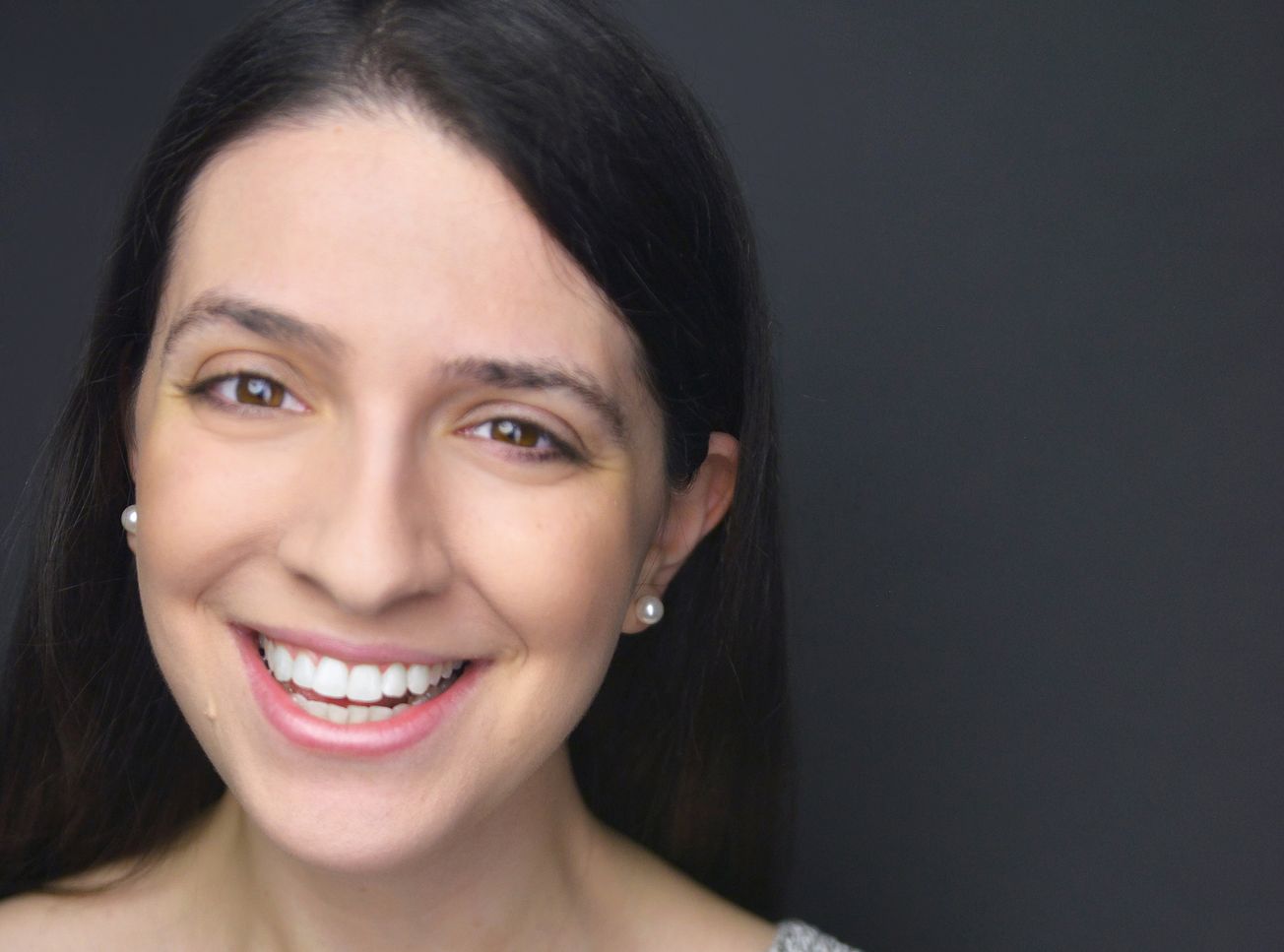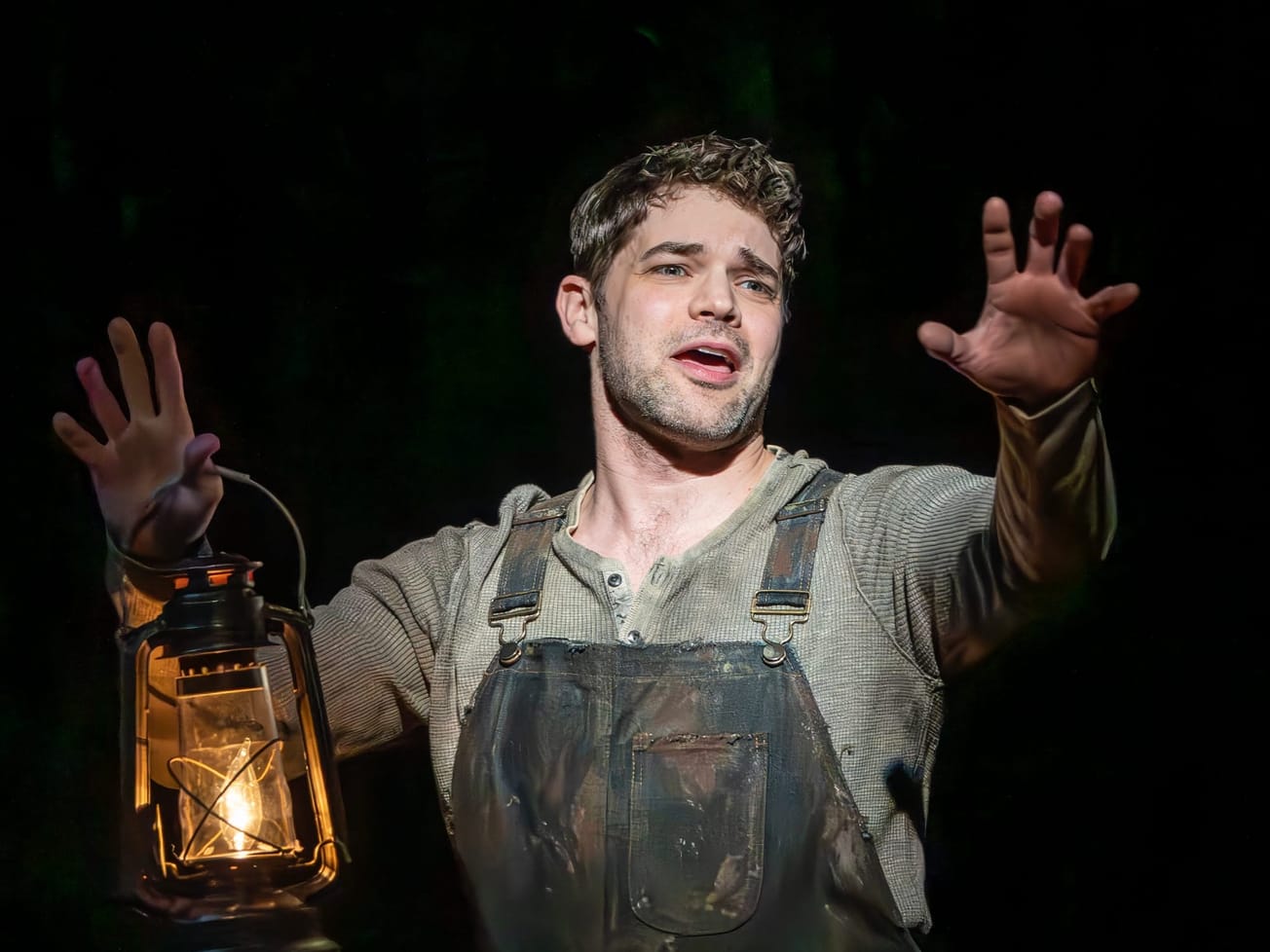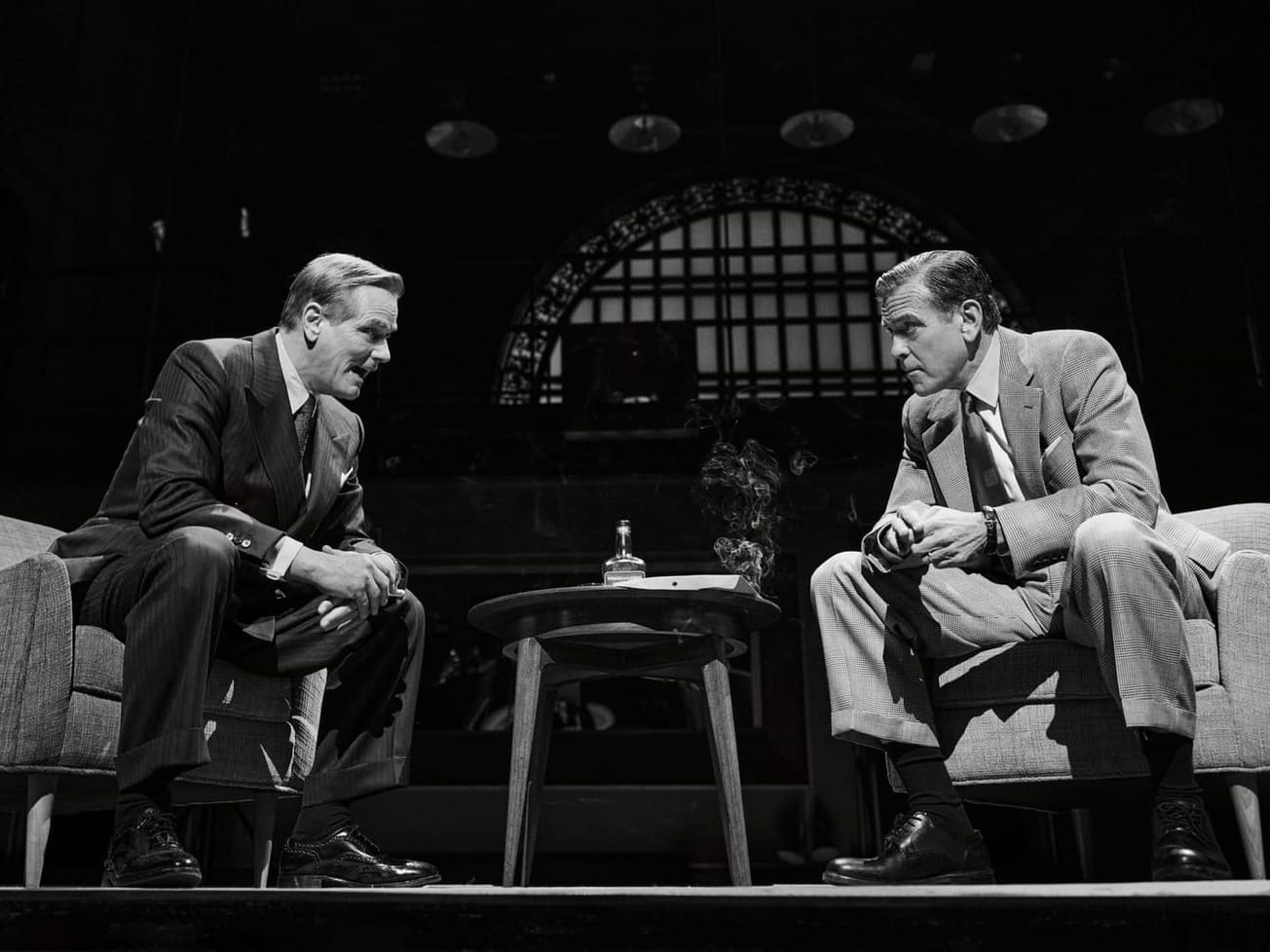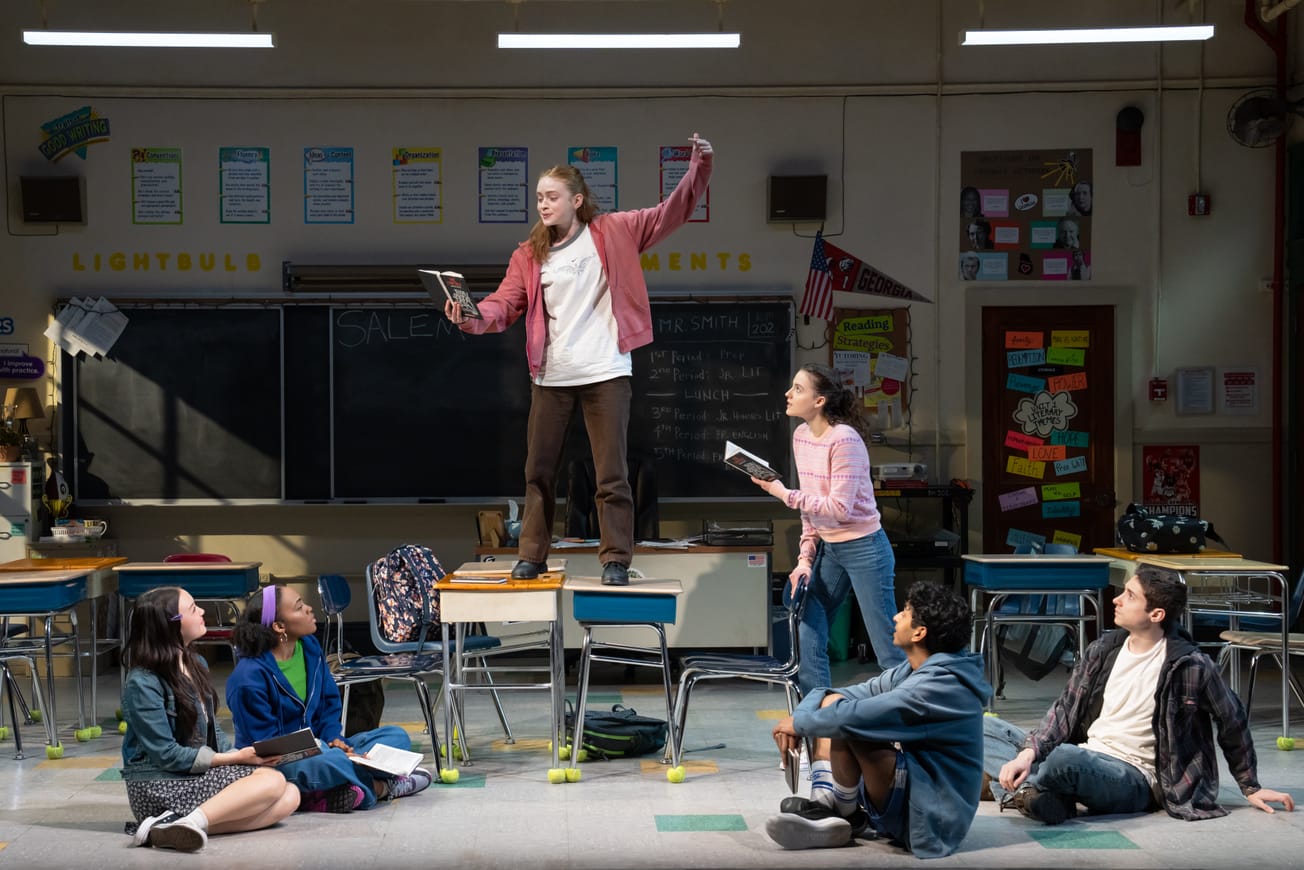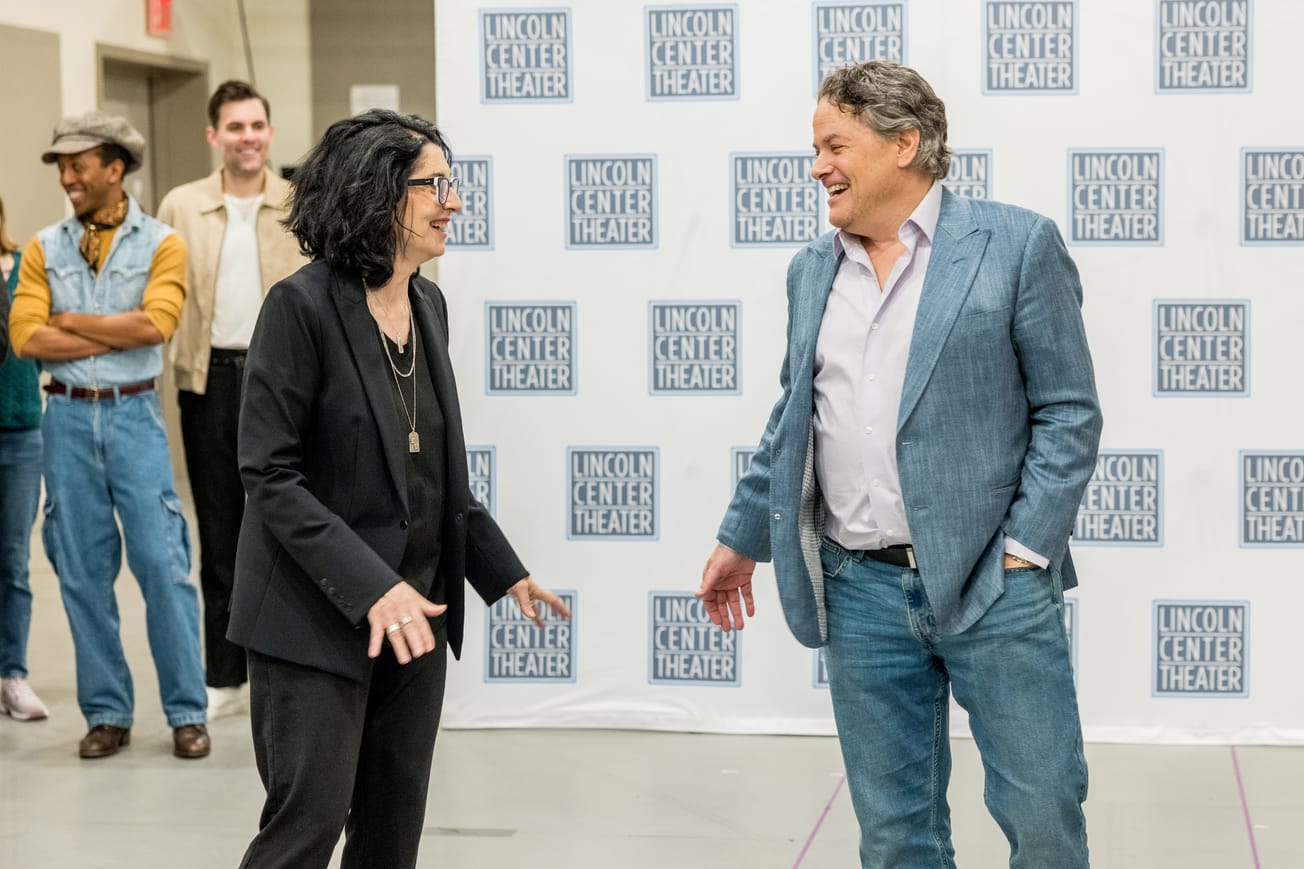At the front of a warm rehearsal room, director Sammi Cannold stands with a pen pressed to her lips, studiously surveying her actors and then diving pen-first toward her legal pad as inspiration strikes.
The actors that Thursday include two Eva Perons, the older and the younger, played by Solea Pfieffer and Maia Reficco, respectively, in Cannold’s revisioned “Evita,” premiering at New York City Center mere days after this rehearsal. And with two Evas plus one mistress now sharing the stage in “Another Suitcase in Another Hall,” there are still some details to be worked out.
For example, is the appearance of young Eva in this scene an actual hallucination or a recalled memory? It’s “a deepening of the memory,” Cannold tells Pfeiffer, referring back to Eva’s own history as a mistress, a fact she’s solidified after countless readings of Peron biographies, trips to Argentina and previous research for her college thesis.
Cannold, known for her immersive productions of “Violet” on a moving bus and “Ragtime” on Ellis Island, likes to throw herself into a project. And her production of “Evita,” which splits the title role in addition to employing new staging and choreography, drawing on culturally specific dance numbers, is one that she has been hoping to sink her teeth into for years.
The director spoke with Broadway News about her take on the classic musical and the pressure that comes with trying something new.
Edited excerpts:
Broadway News: What are the new elements that this production brings?
Sammi Cannold: The most important one is that we’ve split the role of Eva into young Eva and Eva, with permission from the writers and all involved. We have a teenager who plays the role from when she’s in Junín at the beginning of the show through to the Buenos Aires dance break. And then she transitions into an older woman who’s come of age. The reason for that is that if you read biographies that have been published on Eva’s life in the last 10 years, they all talk about how when she was a teenager, there were multiple incidents of rape and sexual assault in her life. And of most relevance to the musical, if she were actually intimate with the tango singer Agustín Magaldi, who appears in the musical, she would’ve been 15 and he would’ve been 36. So that’s the primary thing that we’re that we’re playing with, to say that this narrative is different in a modern eye.
But it also allows us to have a dialogue between Eva and Young Eva. Once she stops being herself in real time, young Eva can come back in flashback form to bring out more elements of the story that we’ve been uncovering and dying to get into the piece.
BN: What more do you think should people know about Eva Perón?
Cannold: I think so often we think of her as an icon. We think of her as a white dress. We think of her as arms raised in a V. We think of her in a blonde bun. And our production seeks to highlight all about her that is human. What does it mean for a little girl to make the ascent that this little girl made? I think in other productions, it’s more about what does this icon mean for the country?
BN: Were you approached about doing ‘Evita,’ or did you bring this idea to City Center?
Cannold: [Jack Viertel and I] had six months of conversations about different titles, but ‘Evita’ was always on the top of the list because it was my thesis in college. I went to Argentina in college to do research, and I’ve been so obsessed with the musical. Every meeting I have, it would always be the first thing that I would pitch.
BN: And then you went back to Argentina before taking on this production, which included visits to Eva’s hometown and a visit to the nurse who cared for her when she was dying. What did you learn from that?
Sammi: At the end of our visit, the nurse, María Eugenia Álvarez, asked us to come stand next to her and she asked if we could give her our hands. Because she held Eva’s hand when she was dying and she wanted to transfer that energy to us. And I’m not really spiritual personally, but that was a moment. Not only is there that transference of energy in whatever form you believe it takes, but there is a responsibility that comes with this surviving woman who knew her saying ‘Take her story, but also be really careful with it, because she means a lot to a lot of people.’
And then she told us a lot about like the days of when Eva was dying, which is shrouded in a lot of mystery because she refused treatment again and again for her cancer. And the nurse explained to us that she was just so committed to her cause that to her medical attention was an obstacle. She saw it as her duty to make sure that the 7.5 million women in her country exercised their vote. But she also just really believed in Robin Hooding, essentially, taking care of the descamisados, who are the shirtless ones in her country. She never got past middle school education, so I don’t think she knew that what she was doing was unsustainable,
BN: It seems like you take a research-based approach to your direction.
Cannold: I don’t know why I wouldn’t in the sense that this is a topic that has so much to mine from. I don’t need to make things up because her life was just that interesting. I directed a play at A.R.T. this winter, and it takes place on an island off the coast of mainland South Korea. And I went to South Korea to do research for it. And it was the most enriching experience of my career because I got to then go into the room saying, ‘Oh, I actually can tell you how these women would feel about this because I talked to them.’ So from my perspective, the more information I have, the better suited I am to to do my job.
BN: Do you feel any pressure in taking on ‘Evita?’
Cannold: ‘Evita’ is a property that is so beloved. And I find that in this community, everybody has feelings about how it should be done. And I think that to direct a revival is the most exposed thing a director can do. Because if it’s bad, it’s definitely my fault because we’ve proven that this property is great. Our whole team is trying to do something new. But how do we do that without breaking what already is so great about the show? So it’s that pressure.
Also, as a director, I have never been reviewed in New York. I’ve never directed anything in a 2,200 seat theater. It’s just the size and scale and the speed of this. We have nine days to make it.


















































